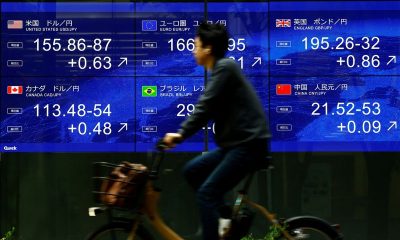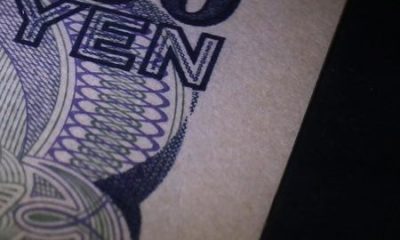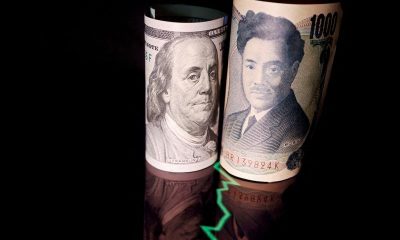Stock Markets
Caliway Announced CBL-514 Phase 2 Study for Cellulite Treatment Met All Primary and Secondary Endpoints

- CBL-514 is the first product to treat cellulite at the raised areas.
- Currently, there is no effective and safe cellulite treatment on the market. The global market for cellulite treatment is estimated to expand to $7.37 billion in 2034.
- CBL-0201EFP Phase 2 study demonstrated CBL-514 statistically significant efficacy in reducing cellulite severity scores at 4 and 12 weeks after treatment.
- Over 50% of participants experienced at least one level of improvement in cellulite severity 12 weeks after the final CBL-514 treatment evaluating with the modified Hexsel Cellulite Severity Scale among 4 levels of severity.
- CBL-514 is under development for multiple indications, including Cellulite, Local Fat Reduction (currently in Phase 2b), and Durum’s disease (currently in Phase 2), which brought Caliway the Fast Track Designation and the Orphan Drug Designation by the FDA in Feb. 2024.
NEW TAIPEI CITY, April 25, 2024 /PRNewswire/ — Caliway Biopharmaceuticals (Caliway) today announced the topline results of the CBL-0201EFP Phase 2 study, which met all the primary and secondary efficacy endpoints in the ITT (NYSE:) (Intent-to-treat) and PP (per-protocol) analysis population, demonstrating CBL-514’s statistically and clinically significant efficacy in improving cellulite severity with favorable safety and tolerance profiles.
CBL-514, Caliway’s lead pipeline, is a multi-indication lipolysis injection that can reduce subcutaneous adiposity by inducing adipocyte apoptosis. Among all the current cellulite treatment products, CBL-514 is the first and only product to treat cellulite in the raised areas.
Apart from cellulite treatment, CBL-514 is also under Phase 2 study for subcutaneous fat reduction and Dercum’s disease. Moreover, the U.S. FDA granted CBL-514 Fast Track Designation and Orphan Drug Designation based on the CBL-0201DD Phase 2 study results for Dercum’s disease in February 2024.
CBL-0201EFP Phase 2-stage 1 Topline Results: Significant Reductions in Cellulite Severity Across Three Dosage Groups
CBL-0201EFP Phase 2 study is an open-labeled study to evaluate the safety, tolerability, and efficacy of CBL-514 injection for the treatment of Edematous Fibrosclerotic Panniculopathy (EFP, cellulite). The efficacy was assessed using the modified Hexsel Cellulite Severity Scale (Modified HCSS), with the highest score (9) indicating the most severe cellulite severity and the lowest score (0) indicating no cellulite. The severity level of cellulite will be scored as mild (1-3), moderate (4-6), or severe (7-9), which will be determined by the total scores.
In the CBL-0201EFP Phase 2-stage 1 dose-finding study, a total of 12 participants were enrolled in 3 sequential escalating CBL-514 dose groups, 40mg, 60mg, and 80mg, to receive 1 CBL-514 treatment administered on both sides of the posterolateral thighs.
The statistical analysis revealed significant reductions in cellulite severity across three dosage groups. Follow-up assessments at 2 and 4 weeks post single treatment on both thighs showed statistically significant improvements in cellulite severity for all dosage groups, with the high-dose group of 80 mg showing the most promising efficacy, reducing cellulite severity score (mean ±SD) of -2.0 ±0.9 points (p= 0.00049,95%CI: -2.77, -1.23) and -2.6 ±1.5 (p= 0.00169,95%CI: -3.88, -1.37) at 2 and 4 weeks after treatment.
CBL-0201EFP Phase 2-stage 2 Topline Results: Over 50% of Participants Demonstrated at least One Level of Improvement Among 4 Cellulite Severity Levels
In the CBL-0201EFP Phase 2-stage 2 study is a single-arm study, a total of 23 participants were enrolled to receive up to 2 CBL-514 treatments based on cellulite severity on the thighs, with a maximum single dose not exceeding 320 mg administered at 4-week intervals.
The baseline of participants’ average cellulite severity score (mean ±SD) is 6.5 ± 1.0 points. Four weeks after the final CBL-514 treatment, using Modified HCSS score of 1 ~9 in 4 severity levels, there was a reduction in cellulite severity with a mean change of -1.3 ± 1.3 points (p < 0.00001, 95% CI: -1.70, -0.90), demonstrating CBL-514's statically significant efficacy in cellulite severity improvement at both 4 weeks (p < 0.00001) and 12 weeks (p < 0.00001) after CBL-514 treatment. Moreover, over 50% of participants experienced at least one level of improvement in cellulite severity at the 12 weeks after the final CBL-514 treatment.
In addition to the primary efficacy endpoint, a secondary efficacy endpoint assessed by the Global Aesthetic Improvement Scale (GAIS) demonstrated notable improvements in cellulite. Following the final treatment, both the Principal Investigator (PI) and participants assessed over 95% of individuals as having improved cellulite appearance at the four-week mark.
The safety and tolerability profiles of CBL-514 demonstrated in both stages of the study were favorable and consistent with previous clinical studies of CBL-514. Most adverse events were mild to moderate injection site reactions, including injection site bruising, pain, swelling, and warmth, and were resolved within 28 days post-treatment.
These findings underscore the potential of CBL-514 as a highly effective treatment option for reducing cellulite severity, offering renewed confidence and satisfaction to those affected by this common cosmetic concern.
Following up, Caliway will further develop the cellulite severity scale for future CBL-514 clinical studies to evaluate cellulite improvement efficacy based on the U.S. FDA’s instruction.
About Cellulite (Edematous Fibrosclerotic Panniculopathy, EFP)
Cellulite is characterized by the nonpathological appearance of the dimpled skin surface (likened to orange peel, cottage cheese, or mattress appearance), which occurs on the thighs and buttocks. The relief alterations of cellulite include depressions and raised areas. The depressions are caused by skin retraction by subcutaneous fibrous septa, while raised areas are projections of fat and subcutaneous structures to the skin surface. According to the American Society of Plastic Surgeons (ASPS) report, around 80 to 90% of women experience cellulite dimpling.
The current treatment for cellulite includes non-invasive (medical devices and collagenase drug) and invasive options. However, their efficacy remains limited and temporary. Additionally, most products would cause significant side effects after administration, including severe bruising, pain, and hyperpigmentation, making most patients reluctant to receive them. The clinical need for cellulite treatment remains unmet. The global market for cellulite treatment is estimated to expand to $7.37 billion in 2034.
About the CBL-0201EFP Phase 2 Study
CBL-0201EFP Phase 2 study is an open-labeled study assessing the efficacy and safety of CBL-514 in participants with Edematous Fibrosclerotic Panniculopathy (EFP) cellulite. The study has an integrated design consisting of a single ascending dose (SAD) part in Stage 1 followed by a single-arm design in Stage 2.
The Stage 1 study (clinicaltrial.gov ID: NCT05632926) included a total of 12 participants enrolled in 3 sequential escalating CBL-514 dose groups, 40mg, 60mg, and 80mg. Eligible participants will be sequentially assigned to receive 1 course of allocated CBL-514 dose administered by subcutaneous injection on both sides of the posterolateral thighs.
The Stage 2 study (clinicaltrial.gov ID: NCT05836779) included a total of 23 participants enrolled in 1 selected CBL-514 dose. Eligible participants will be sequentially assigned to receive up to 2 courses of allocated CBL-514 dose administered by subcutaneous injection on both sides of the posterolateral thighs.
About CBL-514
CBL-514, a potentially first-in-class small-molecule drug, is a lipolysis injection that can induce adipocyte apoptosis and lipolysis to reduce subcutaneous adiposity in treatment areas in animal studies without causing any systematic side effects on the central nervous system and cardiovascular system, and respiratory system. Caliway’s preclinical studies showed that CBL-514 upregulates the apoptosis mediators caspase 3 and Bax/Bcl-2 ratio, and then induces dose-dependent adipocyte apoptosis in vivo and in vitro.
Caliway is investigating multiple indications for CBL-514, including non-invasive subcutaneous fat reduction, Dercum’s disease, cellulite, and lipoma treatment.
About Caliway Biopharmaceuticals
Caliway Biopharmaceuticals (Caliway) is a Taiwan-headquartered, clinical-stage biopharmaceutical company driven by the discovery of breakthrough small-molecule therapeutics with a focus on medical aesthetics and inflammatory disease.
Listed on the emerging stock market in Taiwan (TPEX6919), Caliway aims to become an innovative pharmaceutical leader in aesthetic medicine and other diseases. For more information, please visit: http://www.Caliway.com.tw/en
Disclaimer
This article and related information on this site contain forward-looking statements. The forward-looking information requires the Company to make numerous assumptions and is subject to inherent risks, uncertainties, and other factors that are beyond the control of the Company which may cause actual results, performance or achievements to be materially different from future results, performance or achievements expressed or implied by such forward-looking statements. The Company undertakes no obligation to timely inform, update, or revise the information on this site if circumstances should change.
For additional contact: info@caliway.com.tw
Stock Markets
Analysis-Warren Buffett’s PacifiCorp utility singed by wildfires
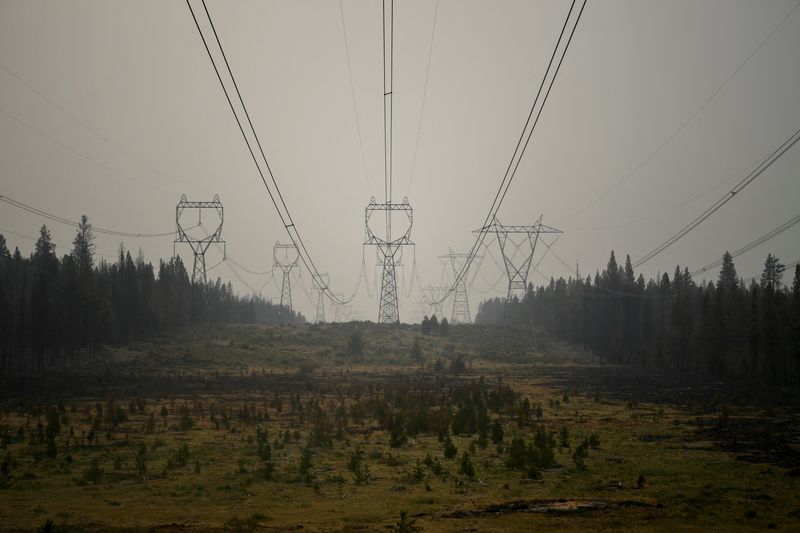
By Jonathan Stempel
OMAHA, Nebraska (Reuters) – Two years ago, Warren Buffett branded Berkshire Hathaway (NYSE:)’s energy business one of his conglomerate’s four “giants.” Now he fears its business model may be broken.
Berkshire Hathaway Energy’s PacifiCorp unit faces billions of dollars in potential liabilities from wildfires that have scorched hundreds of thousands of acres in southern Oregon and northern California.
Costs could rise as more fires break out, and from efforts to prevent them. Climate change, reflected in drier and hotter weather and more combustible vegetation, adds to the risks.
“I did not anticipate or even consider the adverse developments in regulatory returns,” Buffett wrote in his annual shareholder letter in February. “I made a costly mistake in not doing so.”
What remains unclear is the extent PacifiCorp’s problems drag on the conglomerate’s overall results, with Berkshire’s deep balance sheet and dozens of other operations being unable to totally counteract.
Buffett, 93, and his designated successor Greg Abel, 61, may face shareholder questions at Berkshire’s May 4 annual meeting in Omaha, Nebraska, about their concerns for the energy company.
“Wildfires make (the utilities) fire insurance companies on top of being utilities,” said Steven Check, who oversees $1.9 billion at Check Capital management, including $600 million in Berkshire stock and options. “It is a material change. Warren Buffett did not see this coming at all.”
ESCALATING CLAIMS
Berkshire Hathaway Energy serves about 5.3 million electric and gas customers through PacifiCorp, MidAmerican Energy and NV Energy in 11 western and Midwestern states, and millions more in England and Alberta, Canada.
remove ads
.
It owns 36,400 miles (58,580 km) of electric transmission lines, and operates 21,000 miles of pipelines.
For many years, Berkshire Hathaway Energy – which is 92% owned by Berkshire Hathaway – had been a steady earnings engine for its parent, typically generating 10% to 12% of overall operating profit.
That fell to just 6% in 2023, as the business’s profit slid 40% to $2.33 billion.
PacifiCorp was a big reason. Jurors have found the Portland, Oregon-based utility liable in several verdicts over wildfires from 2020, blaming losses on its power lines. PacifiCorp has denied negligence.
But it ended 2023 with $2.4 billion of projected wildfire losses, and has said losses could grow to $8 billion.
This week, a group of 1,000 fire victims said PacifiCorp should pay them $30 billion.
One result: PacifiCorp will pay no dividends to Berkshire Hathaway Energy for several years, which could affect the parent’s ability to fund operations.
“It’s key for utilities to recover costs and maintain a strong financial profile so they can ensure reliability for customers,” said Travis Miller, a Morningstar stock analyst.
Utilities can reduce the risk of wildfires by insulating wires to reduce the threat of sparks, trimming or cutting down trees that could contact power equipment, burying transmission lines underground, and temporarily shutting off power.
But mitigation can be expensive, and Buffett pledged that Berkshire “will not knowingly throw good money after bad.”
Toby Shea, senior credit officer at Moody’s (NYSE:) Investors Service, explained: “He’s saying, look, if we basically have to pay out billions and billions of dollars every time there is a big fire, this is not a workable model.”
remove ads
.
BLAME THE LAWYERS This is not the first time Berkshire has encountered big headwinds in a major business.
Berkshire spent years cleaning up poor underwriting at General Re after paying $16 billion for the reinsurer in 1998.
It also overpaid for Precision Castparts, which cost $32.1 billion in 2016, only to see its aircraft parts business collapse during the pandemic. Litigation involving PacifiCorp could drag out for years, and the ultimate cost and timing of payouts are uncertain.
In his shareholder letter, Buffett warned that a “confiscatory resolution” might befall PacifiCorp, but that Berkshire and Berkshire Hathaway Energy were structured to survive it.
Though analysts do not foresee a bankruptcy, Berkshire could decide it might not be worth investing in generating and transmission assets if it were forced to foot several years of big legal bills.
“Our assumption is that if damages at PacifiCorp become unsustainable long term, the company’s support toward PacifiCorp could be limited,” S&P Global analyst Sloan Millman said.
Berkshire Hathaway Energy declined to comment for this article.
PacifiCorp said the $30 billion claim shows the need for legal reform, with its ability to serve customers “threatened by excessive wildfire damages pursued by plaintiffs’ attorneys who have a substantial financial stake in these outcomes.”
Some states are addressing utilities’ risk of bankruptcy from wildfires.
In 2019, California lawmakers created a multibillion-dollar wildfire fund that utilities could tap to pay for damages caused by their equipment.
And in March 2024, Utah lawmakers allowed large utilities to collect surcharges from customers to establish wildfire funds, and capped liability on some claims.
remove ads
.
PacifiCorp could benefit if Oregon took similar steps. For now, Berkshire’s size offers protection from big losses.
Paul Lountzis, president of Lountzis Asset Management in Wyomissing, Pennsylvania, which invests 11% of its assets in Berkshire stock, said diversification “really, really helps. It’s not like Berkshire is one singular utility.”
Stock Markets
Bitcoin vs Gold: Peter Schiff and Anthony Scaramucci Clash in Epic Debate
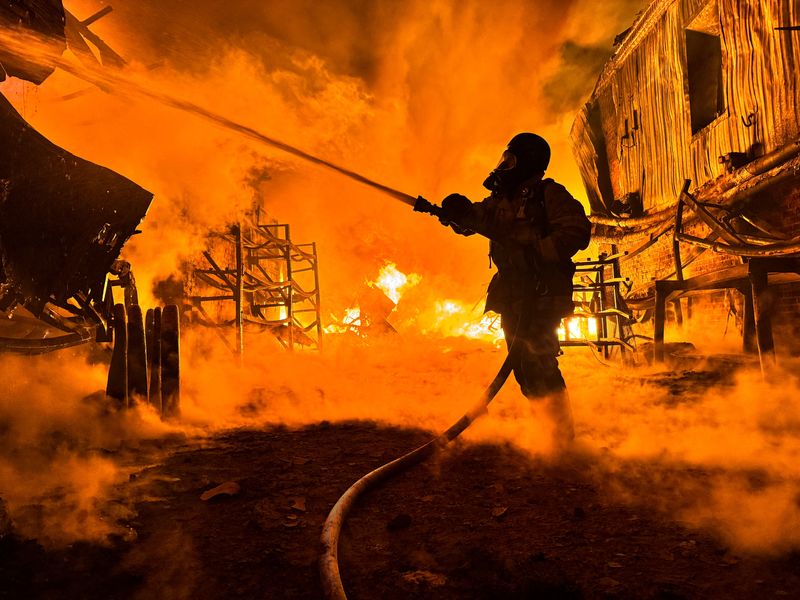
U.Today – In a heated live debate organized by ZeroHedge and presented on YouTube, billionaire investor Anthony Scaramucci of SkyBridge Capital sparred with top analyst Peter Schiff over whether (BTC) or gold serves as a better inflation hedge.
They were joined by the CEO of ShapeSchift Erik Voorhees and Nouriel Roubini, a professor of economics at NYU.
BTC as digital gold
Bitcoin proponents are attempting to reposition it as a digital version of gold, Schiff said. Still, in his view, it falls short of gold’s intrinsic value derived from its physical properties.
“Bitcoin is no more digital gold than an image of a hamburger is digital food,” Schiff noted.
He emphasized gold’s tangible utility in industries like jewelry and electronics, contrasting it with Bitcoin, which he believes lacks practical uses and utility.
Regarding gold’s enduring value, Schiff asserted that it retains its intrinsic properties over time, serving as a genuine store of value. He also argued that the perceived value of Bitcoin is merely based on speculative demand and does not reflect any inherent usefulness or practical applications.
BTC as asset
He emphasized that Bitcoin, like gold, has a deflationary aspect due to its fixed supply. Scaramucci views Bitcoin as “digital gold,” noting its portability compared to physical gold.
He also pointed that Bitcoin is following an adoption curve that will impact its value over decades, likening it to the trajectory of tech stocks that became standard over time and contributed to the S&P 500 index.
remove ads
.
BTC breaks $63K
Source: CoinMarketCapThis surge followed a cooler-than-expected U.S. April jobs report, which alleviated concerns about potential increases in interest rates.
Stock Markets
Death toll from rains in southern Brazil climbs to 57, some 70 still missing
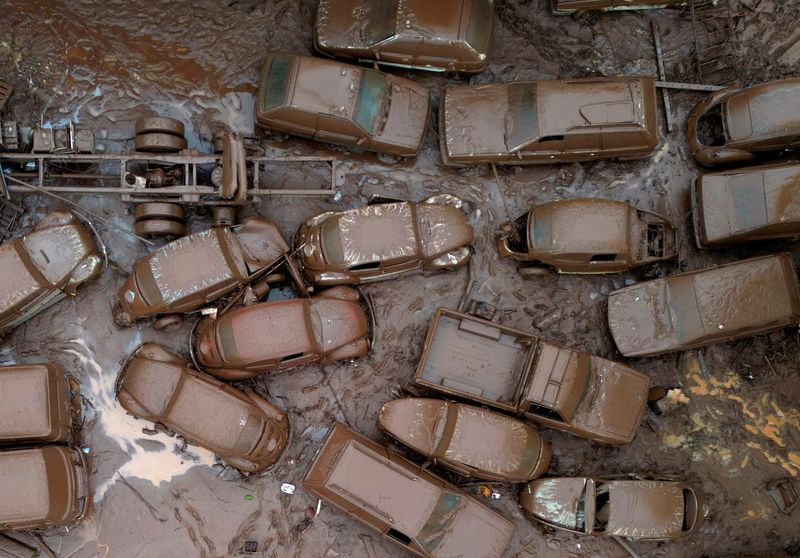
SAO PAULO (Reuters) -The death toll from rains in Brazil’s southernmost state of Rio Grande do Sul rose to 57, local authorities said on Saturday afternoon, while dozens still have not been accounted for.
Rio Grande do Sul’s civil defense authority said 67 people were still missing and more than 32,000 had been displaced as storms have affected nearly two thirds of the 497 cities in the state, which borders Uruguay and Argentina.
Floods destroyed roads and bridges in several regions of the state. The storm also triggered landslides and the partial collapse of a dam at a small hydroelectric power plant. A second dam in the city of Bento Goncalves is also at risk of collapsing, authorities said.
In Porto Alegre, the capital of Rio Grande do Sul, the Guaiba lake broke its banks, flooding streets.
Porto Alegre’s international airport has suspended all flights for an indefinite period.
Rains are expected in the northern and northeastern regions of the state in the next 36 hours, but the volume of precipitation has been declining, and should be well below the peak seen earlier in the week, according to the state meteorology authority.
Still, “rivers water levels should stay high for some days”, Governor Eduardo Leite said on Saturday in a live video on his social media, adding it is difficult to determine for how long.
Rio Grande do Sul is at a geographical meeting point between tropical and polar atmospheres, which has created a weather pattern with periods of intense rains and others of drought.
remove ads
.
Local scientists believe the pattern has been intensifying due to climate change.
Heavy rains had already hit Rio Grande do Sul last September, as an extratropical cyclone caused floods that killed more than 50 people.
That came after more than two years of a persistent drought due to the La Nina phenomenon, with only scarce showers.

 Forex2 years ago
Forex2 years agoForex Today: the dollar is gaining strength amid gloomy sentiment at the start of the Fed’s week

 Forex2 years ago
Forex2 years agoHow is the Australian dollar doing today?

 Forex1 year ago
Forex1 year agoUnbiased review of Pocket Option broker

 Forex2 years ago
Forex2 years agoDollar to pound sterling exchange rate today: Pound plummeted to its lowest since 1985

 Cryptocurrency2 years ago
Cryptocurrency2 years agoWhat happened in the crypto market – current events today

 World2 years ago
World2 years agoWhy are modern video games an art form?

 Stock Markets2 years ago
Stock Markets2 years agoMorgan Stanley: bear market rally to continue

 Economy2 years ago
Economy2 years agoCrude oil tankers double in price due to EU anti-Russian sanctions



